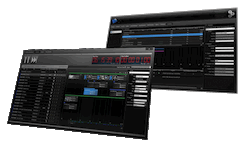
Pixel Power is proposing to change the business model as well as the workflow for broadcast graphics and branding. Its new service, Pixel OnDemand, is based on a pay-per-use model, in which operators are charged when they output graphics from the software. The core product is a software implementation of Pixel Power’s standard graphics engine, which runs on commodity server hardware. The company claims that the rendered output is identical in quality to that of its dedicated devices. The software also includes workflow management to allow the system to generate graphics fully automatically. It includes load balancing and queuing functionality to optimise the use of multiple licences, whether they are in the same location or geographically dispersed, for instance at regional bureaux. The nature of the system is that it is best suited to non-linear content delivery operations such as online television, video on demand and mobile and second screen services. The template graphics and automated workflows mean that each output can be individually branded without increasing the need for manual operations. “Today’s innovative television services have very different operating and revenue models, and require solutions that are equally creative in their approach,” said James Gilbert of Pixel Power. “Pixel OnDemand delivers world-class graphics capability that equals the best on live television, but at the same time operators get budget flexibility, low up-front capital expense and support for the highly efficient workflows that are the hallmark of non-linear television.” While Pixel OnDemand will be demonstrated at NAB later this month, the service is not expected to go live until the third quarter of 2013.







